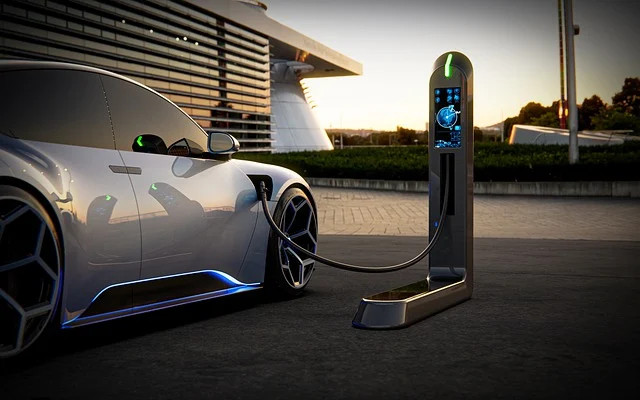In 2023, the electric vehicle (EV) revolution in the United States is charging ahead, driven by significant upgrades in the nation’s charging infrastructure. According to Bloomberg Green, the number of public EV charging stations in the U.S. has seen a staggering 40% increase over the past year alone. This expansion is making it easier and faster than ever for Americans to adopt electric vehicles. In this article, we’ll explore how these infrastructure improvements are fueling EV adoption, examine what’s new in charging technology, and offer practical tips for EV owners to maximize their charging experience.
Accelerating EV Adoption: The Role of Charging Infrastructure
The Surge in Charging Stations
One of the primary barriers to widespread EV adoption has been the availability of charging stations. However, recent efforts have drastically altered this landscape. In 2023, the U.S. boasts over 140,000 public charging ports, according to InsideEVs. This expansion has been supported by federal funding through the National Electric Vehicle Infrastructure (NEVI) program, aiming to create a comprehensive network of fast chargers across the country.
- Level 2 Chargers: Offering up to 25 miles of range per hour of charging, these are ideal for daily commutes and are becoming increasingly common in urban areas.
- DC Fast Chargers: Capable of charging an EV to 80% in under 30 minutes, these are strategically placed along major highways, ensuring longer trips are convenient and stress-free.
Innovative Charging Technologies
The technological advancements in charging not only improve speed but also enhance user experience. According to TechCrunch, wireless charging is emerging as a promising technology, allowing drivers to charge their EVs simply by parking over a charging pad. Additionally, smart charging systems are being integrated into the grid, optimizing energy distribution and reducing peak demand.
- Bidirectional Charging: Allows EVs to return power to the grid or home, providing backup energy and reducing electricity costs.
- Ultra-Fast Charging: New stations can deliver up to 350 kW, drastically reducing charging time and making EVs more appealing for those with busy lifestyles.
Practical Guide: Maximizing Your EV Charging Experience
How to Charge Efficiently
To make the most of the growing charging infrastructure, EV owners should consider the following tips:
- Plan Your Route: Use apps like PlugShare or ChargePoint to locate nearby charging stations and check availability.
- Optimize Charging Times: Charge during off-peak hours when electricity is cheaper and charging stations are less crowded.
- Maintain Your Battery: Avoid letting your battery deplete to under 20% or charge above 80% to extend its lifespan.
Where to Buy Charging Equipment
When it comes to home charging solutions, several brands offer reliable equipment:
- Tesla Wall Connector: Best for Tesla owners, offering fast charging and seamless integration.
- JuiceBox: Known for its smart charging features and compatibility with multiple EV brands.
- Emporia Smart EV Charger: Offers excellent energy monitoring capabilities at an affordable price.
What to Compare When Choosing a Charger
Consider the following factors when selecting a charger:
- Charging Speed: Look for chargers that meet your daily driving needs.
- Installation Costs: Some chargers may require professional installation, which can add to the overall cost.
- Connectivity Features: Smart features such as Wi-Fi connectivity can offer more control over your charging schedule.
The Future of EV Charging: Trends and Predictions
Increasing Accessibility and Affordability
With the U.S. government investing $7.5 billion in EV infrastructure, as reported by Reuters Mobility, the focus is on making EV charging accessible to all. This includes installing chargers in rural areas and underserved communities, ensuring equity in the EV transition.
The Rise of Renewable Energy
As more charging stations incorporate renewable energy sources, such as solar and wind, the environmental impact of EVs will continue to decrease. The International Energy Agency (IEA) predicts that by 2030, a significant portion of charging stations will be powered by renewables, further enhancing the sustainability of electric vehicles.
Autonomous Charging Solutions
Looking ahead, autonomous charging could become a reality. Companies like Rivian are exploring robotic charging solutions that automatically connect to vehicles, making the process even more convenient.
Conclusion: Driving Towards a Sustainable Future
The upgrades in U.S. charging infrastructure are undeniably powering the surge in EV adoption in 2023. With an expanding network of fast and reliable charging stations, innovative technologies, and government support, the path to a sustainable transportation future seems more attainable than ever. As we look forward, the continued evolution of EV charging will play a crucial role in reducing carbon emissions and promoting cleaner, greener transportation options.
Are you ready to join the electric revolution? Explore the latest in EV models and charging solutions and take a step towards a sustainable future today. What charging innovation are you most excited about? Share your thoughts in the comments below!

